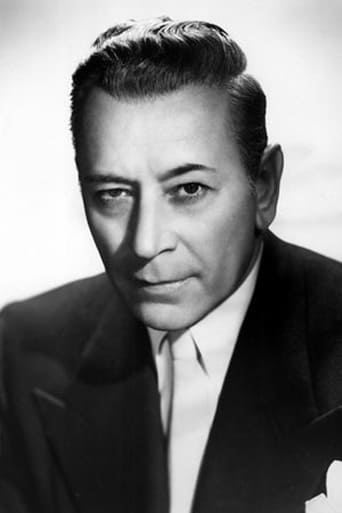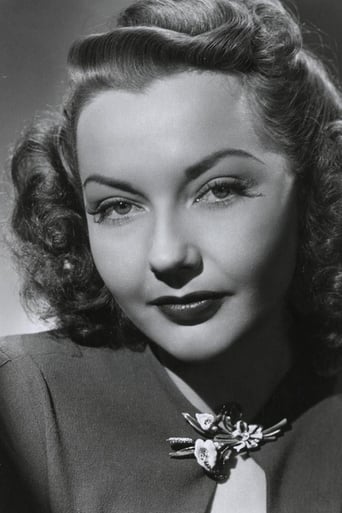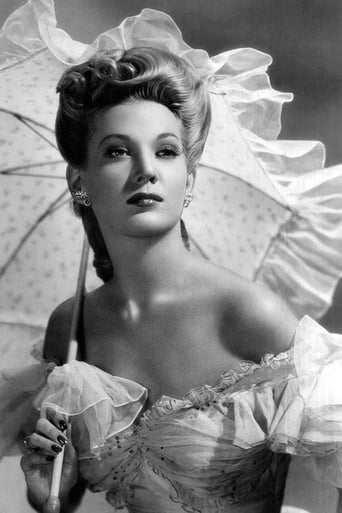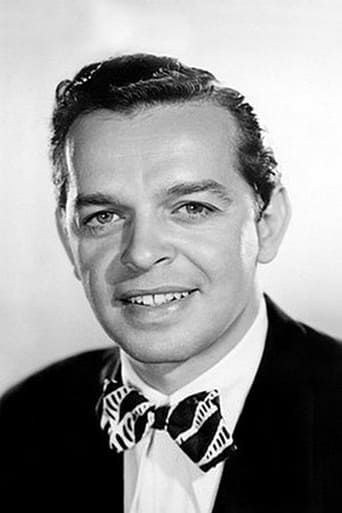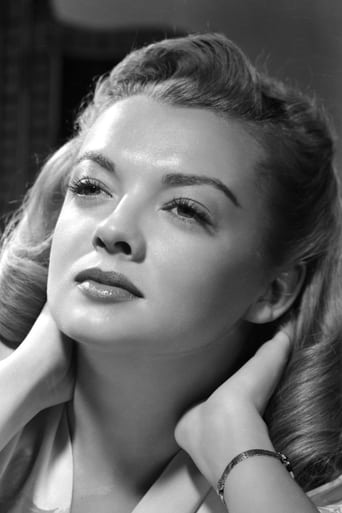LouHomey
From my favorite movies..
Cooktopi
The acting in this movie is really good.
Brendon Jones
It’s fine. It's literally the definition of a fine movie. You’ve seen it before, you know every beat and outcome before the characters even do. Only question is how much escapism you’re looking for.
andrewgage
Anyone who knows me knows I enjoy pre-1960 films that use Los Angeles as a backdrop, and Nocturne is one of 'em. Several scenes were shot off the lot, and one can catch quick (and sometimes elongated) glimpses of Hollywood Blvd., Vine Street, Tom Brenneman's, the Pantages, and the (Hollywood) Brown Derby in their heyday - the exterior of the Derby is used for a scene between Warne and Torp, the oafish thug for hire. One of the places I haven't been able to pinpoint is the location of the Shawn photography studio. It could very well be the area of Sunset Blvd. printed on the photographer's mark in the film... hard to say as the whole area has changed dramatically since the late 1940's. And that's too bad, because the building they used for the exterior shot of the studio looked pretty nice. But I suspect that it's one of those buildings like Mildred Pierce's Glendale house: the actual structure was 1 storey on the outside and the Hollywood set shows it magically to be 2 storeys on the inside. Suspension of disbelief anyone?If you like post-war design as much as I, a couple of the sets are a treat to see - those being Vincent's house (possibly a Neutra-inspired creation) and the Shawn Studio, both of which feature up-to-the-minute trends in styling and decor (that is, for Southern California, 1946). Personally, I'd move into Keith Vincent's house in a heartbeat! It's like a little bit of Palm Springs in the Hollywood Hills.When it comes to performances, Mabel Paige steals the show, especially in the scene where she's having tea with her gambling partner, Mrs. O'Rourke (Virginia Edwards). Her character adds a delightful touch of homespun levity to the story. I'd love to have her as a grandmother!Surprisingly, George Raft's performance is so stiff that Woody Woodpecker was probably eying him for lunch. He kind of traipses through the pic with a strange, wry countenance, and grins at (what strike me as) odd times, like we're all missing out on some behind-the- scenes joke. Raft doesn't strike me as a great actor of the period, the likes of Clark Gable or Edward G. Robinson, but he held his own in movies where he played the bad guy. I don't think he really got the concept of how to play the good guy. Someone else said that Dick Powell should have been awarded the role, and I couldn't agree more. What a great transitional picture that could have been for Powell, the warbler from Warner Bros. turned private dick. Music and murder. But alas...Myrna Dell is a kick. I see her as a kind of a cross between Eve Arden and Joan Blondell. Wish there were more of her in the movie. Her delivery of lines like "I didn't listen to his music. It was icky!" are priceless.The full cast list includes characters in scenes that were deleted. I wonder what the deleted scenes were all about...(POSSIBLE SPOILER FOLLOWS) All in all, I really like this movie. It's got some fun twists and turns as it goes along, and the revelation of the culprit caught me by surprise. I have this film on a commercially-released VHS but have not come across it on DVD yet. Apparently it was released on DVD in the early 90's, so it probably isn't a restored print, and I'd also assume it wouldn't have any decent bonus material (like the deleted scenes). Too bad, because this is a good little film worth watching, all in all.
Robert J. Maxwell
Raft is a police detective investigating an apparent suicide. A reprobate composer of pop songs is found with "a bullet in his noggin," a revolver in his hand, and power marks all over him. The cops are satisfied but Raft is compelled to wonder, as Lieutenant Columbo would have, why the composer sent his butler out for some bicarbonate of soda, and why he stopped writing his next song in mid-note, or rather mid-shot. Raft pushes the investigation too far, smashing up a couple of rooms and flattening one or two surly characters, and hustling one of the composer's recent lady friends until, as it must to all responsible cops, the time comes when he must forfeit his badge and gun.The dialog has a couple of neat touches, along the lines of: "I heard you were busting up some furniture but from the looks of you I'd say the furniture won." And when Raft appears in bandages, his shirt blotched with blood, after a fight with some pituitary case, someone remarks, "I see you've been painting the town red." Raft: "The other way around." Raft looks good, with his cast-iron features and neat fedora. Lynn Bari, the girl in the picture, is one of those many B-list actresses that never got very far -- Mara Corday, Faith Domergue. No great loss to cinematic art.The film itself is routine. Raft encounters one suspect after another, the pursuit punctuated by bouts of violence. Half-way through I figured the killer was either the piano player or the blond -- otherwise why were they getting so much screen time in unimportant roles? But I was only half right, or two times right, depending on the theory of numbers you subscribe to.
sol1218
(Some Spoilers) Popular Hollywood song writer Keith Vincent, Edward Ashley, is found dead with a bullet at his head at his luxury home in the Hollywood Hills. Checking out the scene the police come to the conclusion that Vincent killed himself after the forensics results come in showing powder burns on both his hand and head and no sign of a struggle but LAPD Det. Warner, George Raft, has other ideas about Vincent's death; he was murdered. It's apparent that Vincent was murdered when a piece of music he was composing was found on his piano unfinished. The piece was dedicated to some woman called Dolores. The fact that Vincent was, according to his live-in maid and houseboy, very upbeat the day he was found dead convinced Det. Warner that his death wasn't a suicide. On the wall of Vincent's living-room there's a number of large photos of women who were in one way or another involved with Vincent and checking out who they are Warner finds out that Vincent had a habit of calling any woman that he knew Dolores! There was also a photo that was missing and that may have been that of the person who murdered Keith Vincent.Going through the nightlife scene of post WWII L.A Det. Warner tracks down the killer who murdered Kieth Vincent but only after he gets his head broken and his ribs bruised. Warner also falls in love with the #1 suspect in Vincent murder the woman who's photo was mysterious missing from Vincent's living-room wall Frances Ransom, Lynn Bari. Det. Warner connects Vincent with both Frances' younger sister Carol Page, Virgina Huston, and the piano player at the nightclub "The Keyboard", where Carol is a singer and the star attraction, Ned "Fingers" Ford,Joseph Pevney, the club's pianist.Det. Warner finds both Carol and "Fingers" very uncomfortable when he asks them about Vincent's unfinished piece of music and later "Finger's" admits to him that he in fact was a collaborator in a number of Vincent's songs. As Det. Warner gets closer to the truth about Vincent's death, or murder his life becomes endangered when he's attacked by one of the bouncer's or muscle-men Eric Torp, Ben Hoffman,who works at "The Keyboard" nightclub ending up in the hospital. The photographer Charles Shawn, John Banner,who took the pictures of the Vincent women panics and tries to get in touch with Warner about the truth of why he was murdered and who did it. When Warner gets to his studio he finds Shawn dead hanging from the sky window apparently murdered but made to look, like with Vincent, as if he killed himself. Going back to the "Keyboard" nightclub to get some more information out of both Carol and "Fingers, as well as Caorl's sister Frances, Det. Warner is confronted again by the large and brutish Torp. This time Det. Warner puts Torp away with a hot pot of coffee thrown in his face and a steel pipe smashed over his head. A color change threw Det. Warner off to who was responsible for Vincent's murder and with a new photo that Det. Warner uncovered at the Shawn Studio he now knows who's behind Vincent's death and even more why.
blanche-2
After George Raft handed his career to Humphrey Bogart on a silver platter, he made films like Nocturne, a somewhat routine B film noir. Though I guessed the ending, the movie was nevertheless entertaining. What I especially liked were the outside shots of '40s LA, the night club scenes, and the dance lesson scene, all of which, when viewing it today, give a real idea of the atmosphere of the era.The prolific Lynn Bari co-starred. I always found her somewhat odd-looking and older-looking than other women playing the same types of roles. She does these sophisticated, albeit street-smart women well, however. Raft is ably assisted by a good performance from Mabel Paige as his mother. But don't get me wrong. Raft is no mama's boy.

